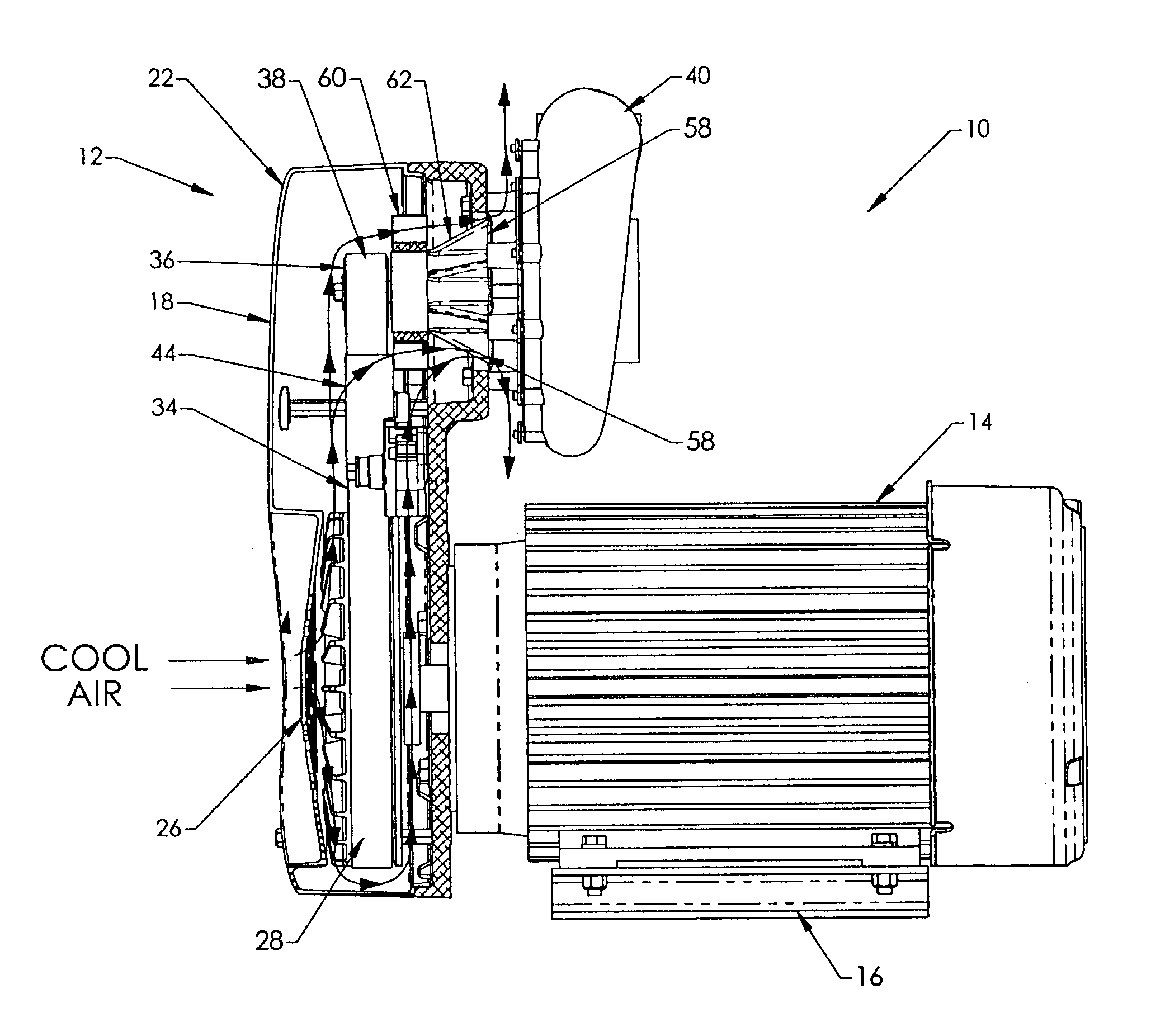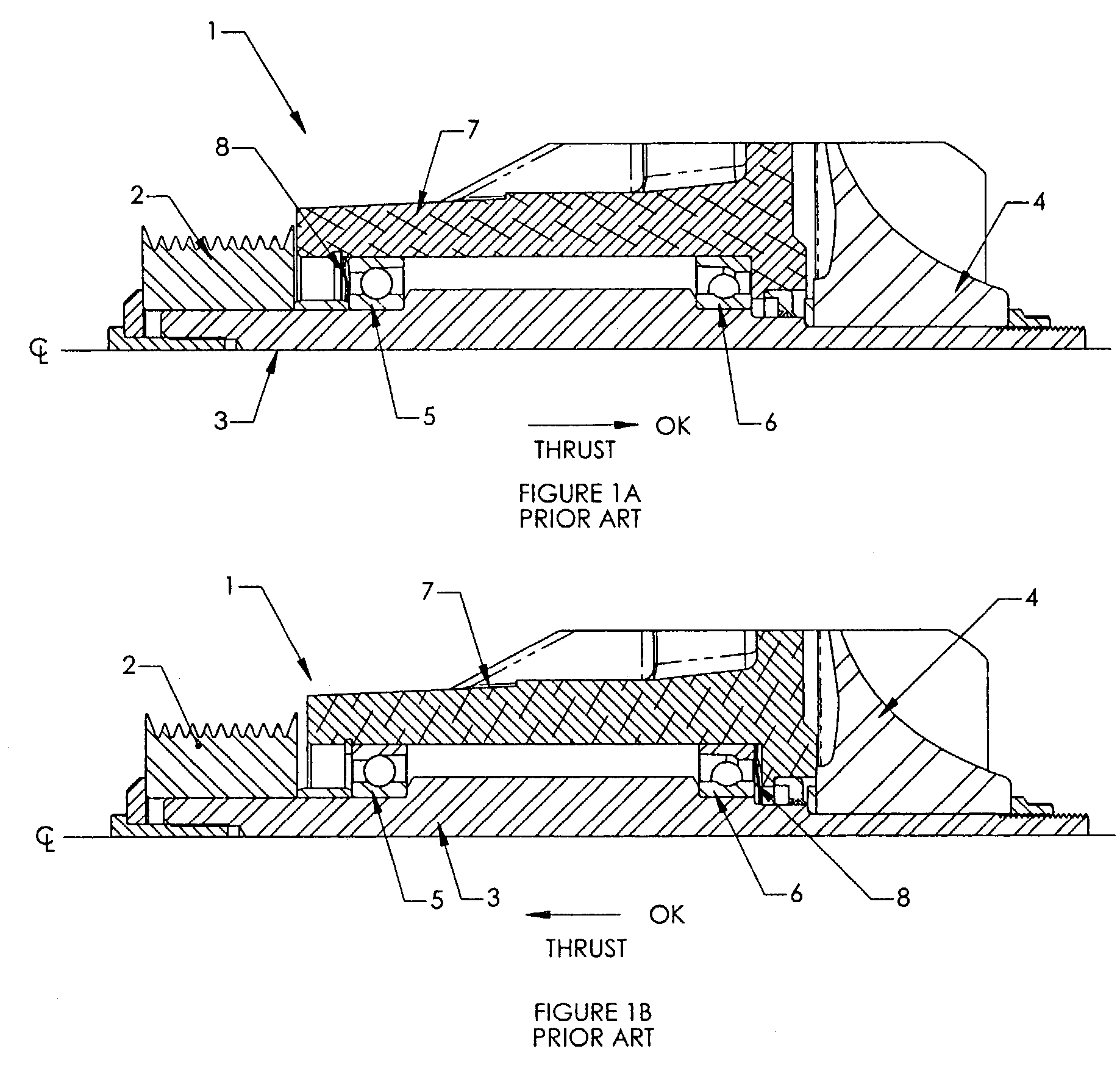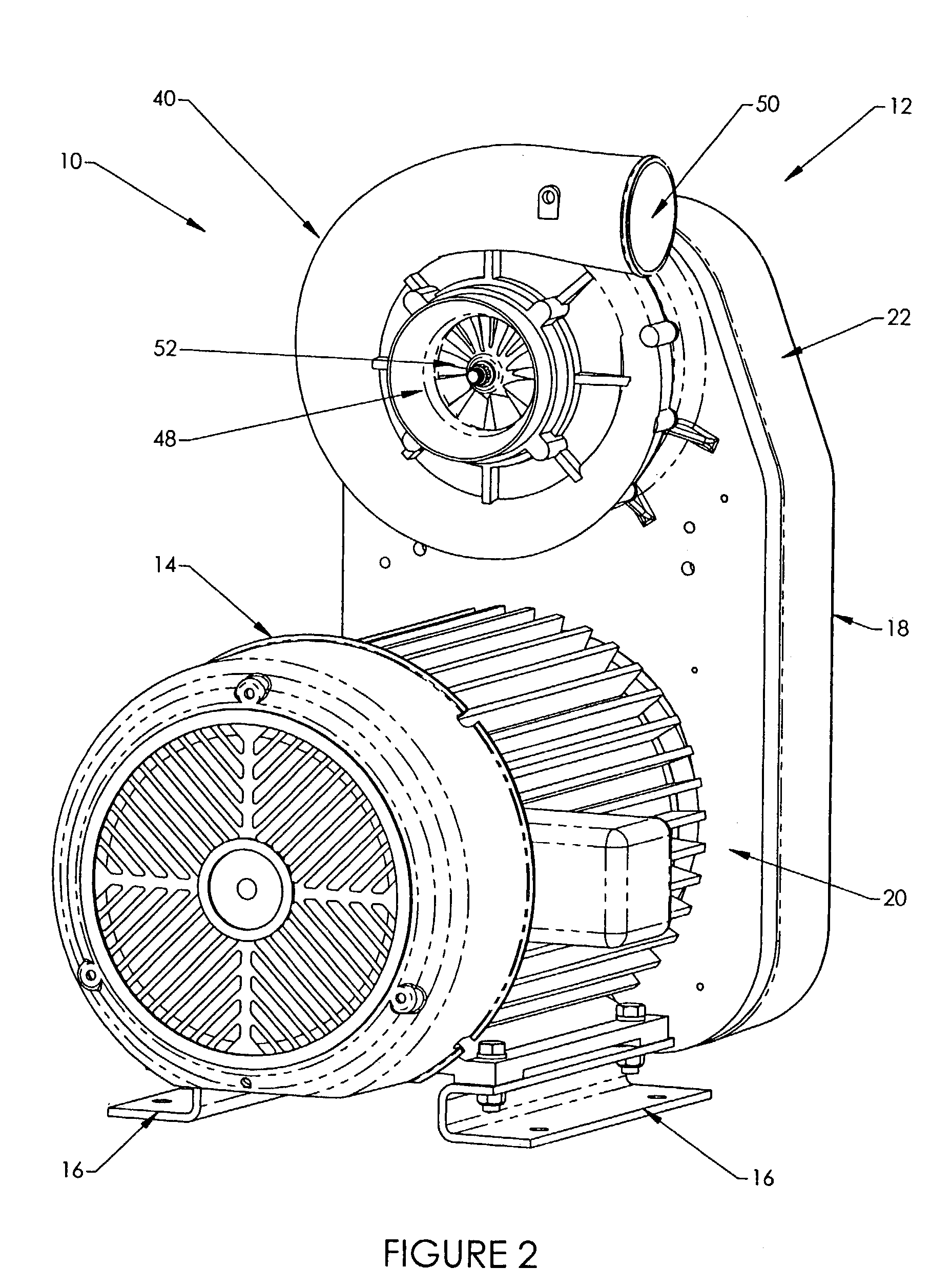High-speed, belt-driven industrial blower
a belt-driven, industrial blower technology, applied in the direction of positive displacement liquid engine, piston pump, liquid fuel engine, etc., can solve the problems of reducing overall life, limiting not only the delivery pressure (i.e., gas or air temperature rise), but also the ability to manage the thermal dissipation in the critical area, etc., to achieve the effect of improving life expectancy
- Summary
- Abstract
- Description
- Claims
- Application Information
AI Technical Summary
Benefits of technology
Problems solved by technology
Method used
Image
Examples
Embodiment Construction
[0048]The present invention resides in a belt-driven industrial blower, generally referred to by the reference number 10 incorporating a self-contained air cooling system 12 for cooling various components of the blower 10 to prolong the longevity and useful life of the blower 10.
[0049]With reference now to FIGS. 2–5, the blower 10 includes an electric drive motor 14 having mounting supports 16 for attachment to the intended mounting surface, typically a floor. The mounting support 16 may include springs or dampeners for isolating the blower 10 from its surrounding to the greatest extent possible. A housing 18 has a back plate or mounting plate 20 thereof attached to the electric drive motor 14. A cover 22 of the housing 18 is removably attached to the mounting plate 20 by appropriate fasteners 24, such as nuts threaded onto bolts extending from the mounting plate 20. The cover 22 is preferably manufactured from robust, but sound absorbing / attenuating materials, for example, rota-mol...
PUM
 Login to View More
Login to View More Abstract
Description
Claims
Application Information
 Login to View More
Login to View More - R&D
- Intellectual Property
- Life Sciences
- Materials
- Tech Scout
- Unparalleled Data Quality
- Higher Quality Content
- 60% Fewer Hallucinations
Browse by: Latest US Patents, China's latest patents, Technical Efficacy Thesaurus, Application Domain, Technology Topic, Popular Technical Reports.
© 2025 PatSnap. All rights reserved.Legal|Privacy policy|Modern Slavery Act Transparency Statement|Sitemap|About US| Contact US: help@patsnap.com



